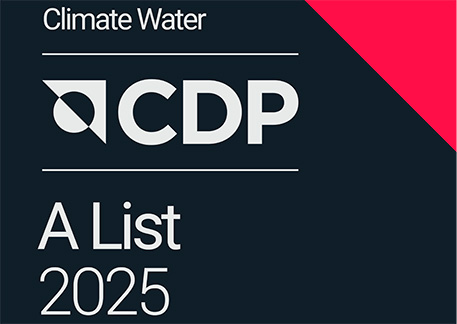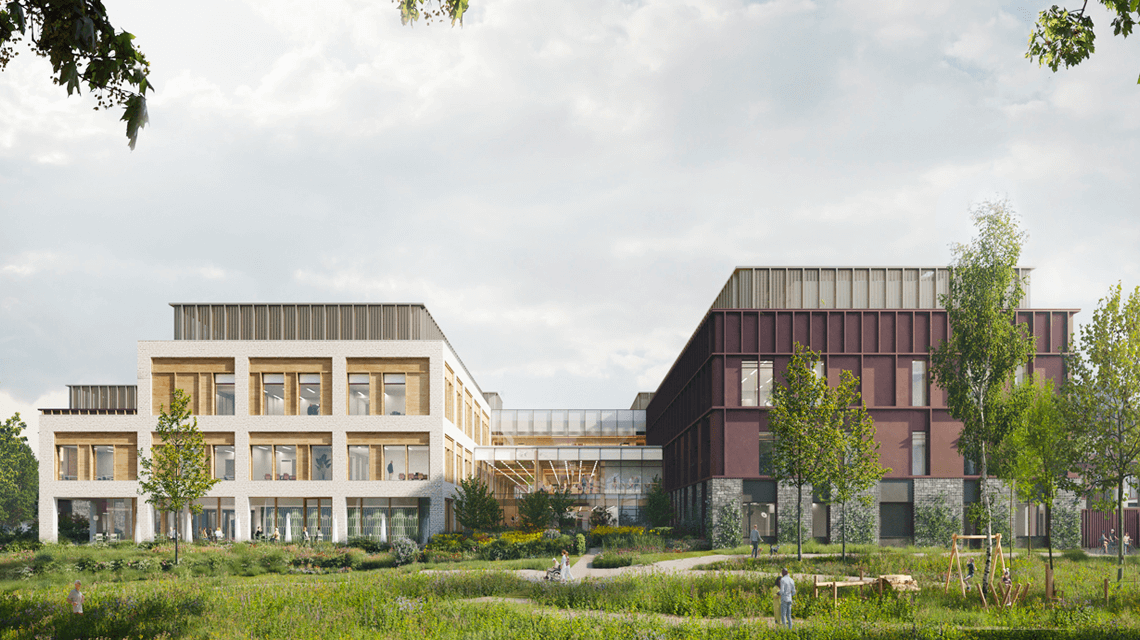Transport infrastructures
Analyst coverage recommendations
- BUY
- HOLD
- SELL
15 Analysts
| Entity | Analyst |
|---|---|
| Alantra | Fernando Lafuente / Álvaro Lenze |
| Alphavalue | Egor Sonin |
| Banco Santander | Mariano Miguel |
| Bank of America | Julius Nickelsen |
| Barclays | Tom Zhang |
| BPI Caixabank | Filipe Martins Leite |
| Bestinver | Álvaro Navarro Ruiz |
| GvC Gaesco | Rafael Fernández de Heredia |
| Intermoney | Guillermo Barrio |
| JB Capital | Miguel González |
| Kepler Cheuvreux | Luis Prieto |
| Sabadell | Luis Arredondo Sánchez-Cendal |
| Bernstein | Víctor Acítores |
| Renta 4 | Ángel Pérez Llamazares |
| BNPP Exane | Gonzalo De Cueto Moreno |
Markets
UK
The Edinburgh tram, Ulster University, and the A-6 road Dungiven-Drumahoe are a few of our biggest projects in the UK.
Operating in this important market since 2015
Road, rail, and unique construction projects that comply with the highest quality and efficiency standards. In the UK, we create infrastructures that stand out also in terms of their innovation and sustainability. We carry out strategic projects with the collaboration of all our stakeholders: society, public and private administrations, local businesses, and non-profits, among others.

In figures
300
€ MILLION
Our revenue portfolio grows with new projects
30
KILOMETERS
Of roads and expressways built
75,000
SQUARE METERS
Built
17
MILLION PEOPLE
Benefited
Cutting-edge sustainable projects
We have only recently entered the UK market, but our presence here is already defined by significant large-scale projects. We have built the second phase of the new Belfast campus, creating a more responsive space to the challenges of education in the future.
We have also built a new 4.7 km section of the Edinburgh tram network, between York Place and Newhaven, and improved the road network in Northern Ireland by building the A6 road between Dungiven and Drumahoe.
Living Wage Employer
Sacyr UK&I is a Living Wage Employer. This certification attests to our Living Wage commitment seeing to that every Sacyr employee in the UK and Ireland makes at least a minimum hourly wage of £13.15.
The Living Wage rate is calculated and updated according to the costs of living. It provides a voluntary benchmark for employers that choose to ensure their staff earn a wage that meets the costs and pressures they face in their everyday lives.
Katherine Chapman, Director, Living Wage Foundation said: “We’re delighted that Sacyr has joined the movement of over 14,000 responsible employers across the UK who voluntarily commit to go further than the government minimum to make sure all their staff earn enough to live on.
By adhering to this commitment, we recognize that paying the real Living Wage is the mark of a responsible employer.
Transport infrastructures
Belfast Grand Central Station: a new, modern, and sustainable transport hub
Sacyr makes CDP´S "Double A" list for transparency in climate change and water security leadership
- Sacyr is among the top 4% of best scored companies by CDP, the world's leading independent environmental disclosure platform.
19/12/2025
Sacyr has made it into CDP's prestigious 'Double A List', recognizing the company's leadership in both climate change and water security. CDP is a non-profit organization running the world's largest environmental disclosure system.
Inclusion on the 'Double A List' demonstrates Sacyr's commitment to addressing today’s most pressing environmental challenges.
Sacyr achieved an "A" score for climate for the fourth consecutive year, driven by its comprehensive decarbonization strategy and proactive climate risk management. In water security, the company has maintained its leadership position for the third year, earning an "A" grade that highlights its dedication to protecting vital water resources.
CDP assesses and scores over 24,800 companies, maintaining the world's largest environmental database, aligned with the Task Force on Climate-related Financial Disclosures (TCFD). CDP data is a catalyst for change, enabling harmonization of climate and nature with economic imperatives. Disclosed information is a critical resource used by policymakers, governments, investors, purchasers, and financial institutions.
CDP's scoring is based on voluntary and comprehensive disclosure of environmental data, providing a robust assessment of how companies manage climate change and water-related risks and opportunities. Inclusion on CDP’s ‘A List’ recognizes those companies leading the transition to a more sustainable and resilient economy.
Patricia Martínez Íñigo, Sacyr's Chief Sustainability, Environment and Innovation Officer, stated: "Our fourth consecutive year in the leadership band of CDP's rigorous environmental disclosure process confirms the strength and consistency of our strategy. By reducing emissions and managing water resources responsibly, we are creating long-term value for our customers, investors, and the communities we serve."
Advancing Decarbonization
This year, Sacyr reinforced its climate leadership by revalidating its science-based targets. The Science Based Targets initiative (SBTi) has rigorously reviewed Sacyr's targets and affirmed that they are aligned with a 1.5°C pathway, the most ambitious designation available.
Specifically, Sacyr has committed to reducing absolute Scope 1 and 2 greenhouse gas (GHG) emissions by 42% by 2030, from a 2020 base year, and to reducing absolute Scope 3 GHG emissions – covering purchased goods and services, fuel- and energy-related activities, and waste generated in operations – by 25% within the same timeframe.
Sacyr's Decarbonization Plan comprises more than 300 projects implemented across its business lines and locations.
Water Positive
Sacyr was the first Ibex 35 company to have its water footprint verified according to the ISO 14046 standard. In 2025, AENOR has certified this verification for the fourth consecutive year, demonstrating Sacyr's leading role in water resource protection within the infrastructure sector.
Sacyr aims to reduce its own water consumption by at least 5% by 2027 across all its activities, in both high and low water stress areas. To achieve this, the company assesses its water footprint to understand, identify, and evaluate the actual and potential impacts related to freshwater and marine environments.
Sacyr's wastewater treatment activities significantly improve water quality.
Additionally, the desalination plants managed by Sacyr Water provide fresh water to regions facing high water stress, creating a positive impact on the environment.
About CDP
The Carbon Disclosure Project (CDP) is a global non-profit organization that runs the world’s leading environmental disclosure system. CDP drives companies, capital markets, cities, states and regions to manage their environmental impacts.
The full list of companies on CDP’s 2025 A List is available here.

The full list of companies on CDP’s 2025
A List is available is here

Artificial Intelligence for Predicting Road Condition
The Apromac project allows us to estimate key road surface indicators. By integrating these indicators with external factors such as weather conditions, we obtain an accurate view of the actual condition of the roads, both in the short and long term.
16/12/2025
At Sacyr we build and maintain thousands of kilometers of road infrastructure around the world. Knowing its condition and anticipating its evolution is vital to guarantee its functionality and safety.
The Report on Investment Needs in Conservation 2025 of the Spanish Road Association estimates that the required amount to fine-tune the national road network is €13.5 Bn. This all-time record figure represents a 43% increase compared to 2022.
Recognizing this need, Sacyr is developing Apromac, a tool that predicts the state of road surfaces. To do this, we apply technologies such as Big Data and artificial intelligence to predict the evolution of the main parameters of the condition of road infrastructure.
"Not only do we use data from the infrastructure itself, but in the analysis we also incorporate standardized information from other Sacyr Concesiones roads and studies on the influence of factors like temperature and rainfall," explains Sergio Campos, project manager.
This tool allows us to improve planning through predictive models for deterioration indicators such as macrotexture, ruts (depressions in the wheel path), and the transverse friction coefficient (TFC), an indicator of skid resistance. In addition, various types of models have been trained and validated to identify which one offers greater accuracy in predictions.
The first project milestone was reached at the end of 2023 and the second is planned for the end of 2025.
Apromac was developed using data from several roads managed by Sacyr: Ruta del Desierto and Limarí (Chile); Turia, Pamasa, Eresma and Aunor (Spain); Pamplona-Cúcuta (Colombia); and Pirámides-Tulancingo-Pachuca (Mexico).
This project has a €500,000 budget and will run until December 31, 2025. Once completed, Sacyr Concesiones will have an advanced tool for long-term prediction of road behavior.
Apromac is co-financed by the European Union, with funding from European Funds, the Spanish Ministry of Finance, and CDTI through the Ministry of Science, Innovation and Universities.
In the future, this tool will have two major impacts: it will allow for better-informed reinvestment strategies in road tenders, considering factors such as project year and financial impact; and it will facilitate monitoring in the operation phase, enabling more efficient planning and execution of necessary road maintenance based on predicted degradation.
Sandra Angel Gavia, Quality, Environment and Energy Manager Chile, Germán Silva Higuera, Corporate Innovation Assistant Manager, and Luis Shuffer Mendoza, General Field Manager.
Baños prefabricados: calidad y circularidad desde Chile
Continuamos con la serie Transformación Circular y, en esta ocasión, viajamos hasta Chile, donde se desarrolla un proyecto pionero de baños prefabricados que combina eficiencia constructiva y sostenibilidad.
28/11/2025
Sandra Angel Gavia, Gerente Calidad, Medio Ambiente y Energía Chile, Germán Silva Higuera, Subgerente Corporativo de Innovación, y Luis Shuffer Mendoza, Jefe General de Terreno, nos explican en el vídeo que acompaña este contenido cómo funciona la industrialización de la construcción, que permite entregar unidades modulares completas, listas para su instalación, con toda la ingeniería y diseño necesarios.
Gracias a este método, la fabricación, el transporte y el conexionado son más rápidos y eficientes. Hasta la fecha, ya se ha instalado el 75% de los 1.000 baños previstos mientras que otros 300 módulos se encuentran en proceso de terminación y montaje.
Beneficios frente a la construcción convencional
Los baños prefabricados ofrecen ventajas clave respecto a la construcción tradicional in situ:
- Eficiencia en tiempos de ejecución: se fabrican en paralelo al avance de la obra, reduciendo plazos globales.
- Control de calidad: al producirse en ambientes controlados, se asegura mayor precisión y acabado.
- Circularidad: se minimiza el desperdicio de materiales, se optimizan recursos y se reduce la generación de residuos.
Próximos desarrollos
Los baños prefabricados son sólo el inicio. Descubre en este vídeo cómo la prefabricación está transformando la construcción en Chile y generando un impacto positivo en tiempos, calidad y circularidad.
